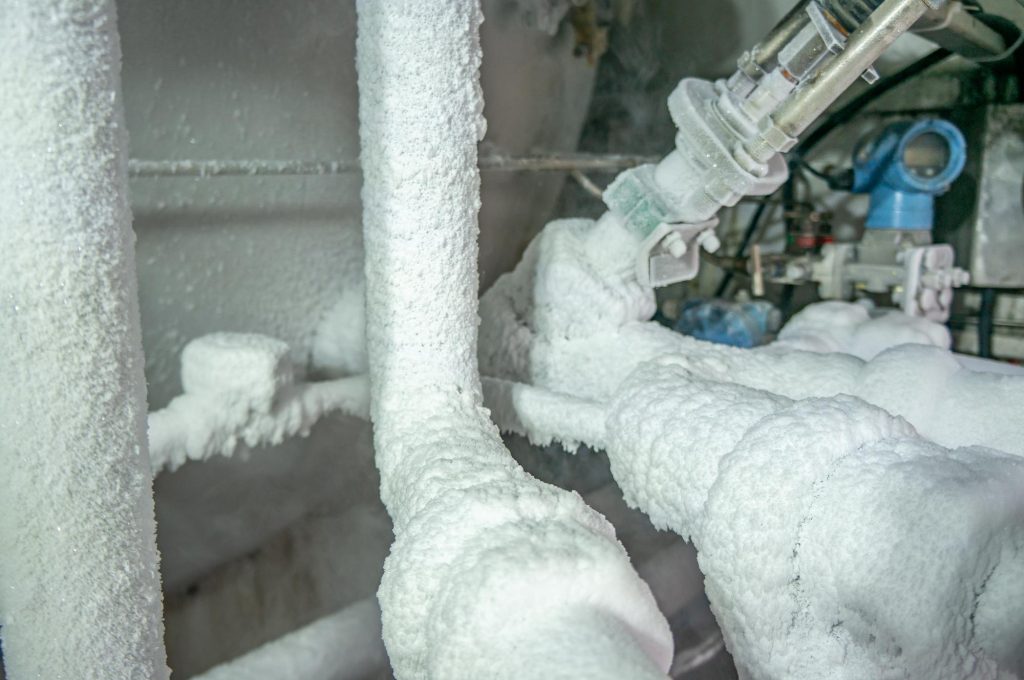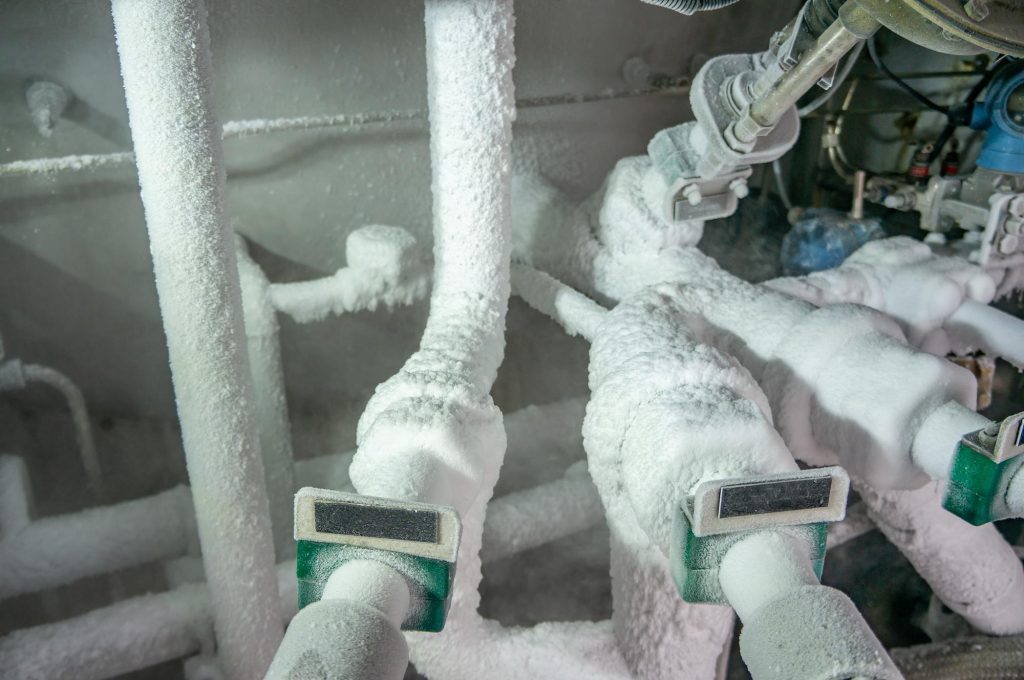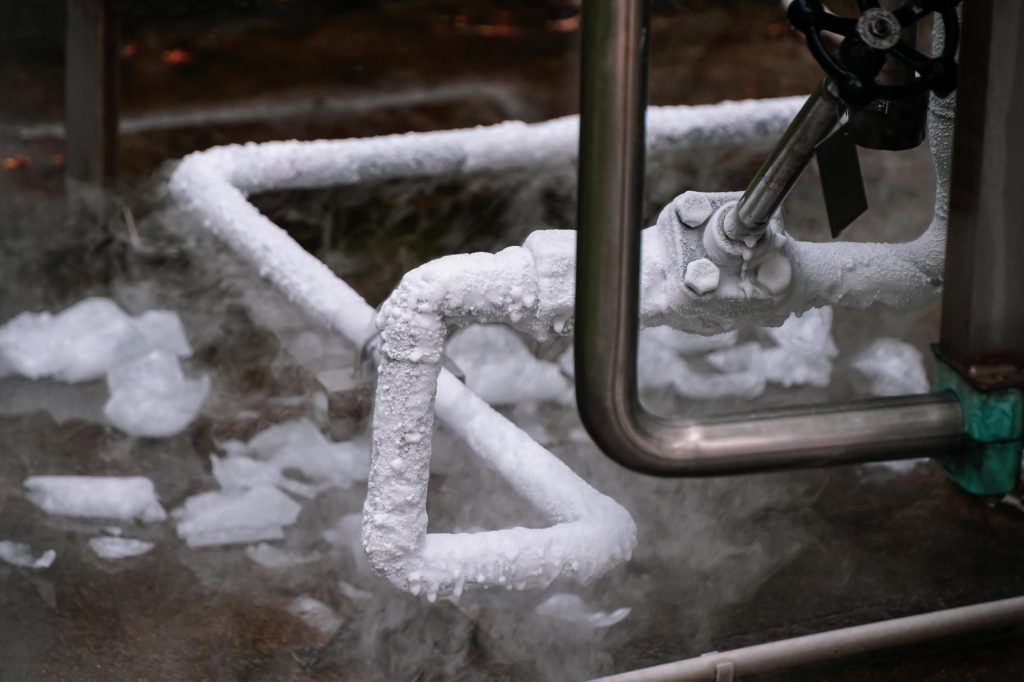Frozen pipes can create a real problem for a homeowner, especially during the winter months. Not only can they be disruptive but they can also be expensive to fix. It’s crucial to thaw any pipes that have become frozen underground promptly to reduce the chances of further harm.
Exercising caution is essential when unfreezing frozen pipes. Precautionary measures should be taken to avoid harm or other issues. Depending on the circumstances, contacting a qualified plumbing expert might be the best option.
In this article, we’ll explore the importance of thawing frozen pipes underground, as well as discuss some safety precautions that must be considered when doing so. We’ll also share some effective methods for thawing frozen pipes and provide helpful troubleshooting tips to assist in case of any setbacks. Finally, we’ll provide some tips to help prevent future incidents of frozen pipes, which can be a highly effective way to avoid future headaches.

What Are The Signs?
Homeowners, especially in the winter season, need to be aware of frozen water pipes underneath their homes as they can create significant harm and result in costly repairs. To avert further destruction, it’s crucial to know what signs to be cautious of that might indicate a pipe has frozen. Recognizing the warning signs soon is essential. Here are a few of the most prevalent ones:
Factors that Contribute to Frozen Pipes
1. Temperature: When the temperature drops below freezing, water inside the pipes can freeze and expand, causing the pipes to burst.
2. Lack of insulation: Pipes that are not properly insulated are more susceptible to freezing.
3. Exposure to cold air: Pipes that are located in areas that are exposed to cold air, such as basements, crawl spaces, or attics, are more likely to freeze.
4. Poor drainage: Standing water in pipes can freeze and cause blockages.
How to Identify If Pipes are Frozen?
If it is suspected that the pipes are frozen, it is critical to take action as soon as possible to avert any additional harm. Here are some common indicators to watch for:
1. No water coming from faucets: If you turn on a faucet and no water comes out, this is a sign that the pipes may be frozen.
2. Strange noises: If you hear strange gurgling or banging noises when you turn on a faucet, this is a sign that there may be a blockage or frozen pipe.
3. Unpleasant odors: If you notice a foul odor coming from your drains or pipes, it could be a sign that there is a blockage or frozen pipe.
4. Visible frost: If you notice frost on the outside of pipes or on the ground above the pipes, this is a sign that the pipes may be frozen.
In the next section, we’ll look at some of the methods you can use to thaw frozen pipes underground.

Thawing Frozen Pipes
When it comes to thawing frozen pipes, there are a few different methods that you can use. Here are three of the most common methods:
Method 1: Electrical Heat Tape
One of the most popular ways to thaw frozen pipes is to use electrical heat tape. This is a long, flexible heating element that can be wrapped around pipes to help melt any ice that may have formed.
To use electrical heat tape, simply wrap it around the frozen pipe, making sure that it is firmly secured in place. Then, plug the heat tape into an electrical outlet and wait for it to start working. Depending on the severity of the freeze, it may take several hours for the ice to fully melt.
Method 2: Hot Water
Another common technique for thawing frozen pipes is to use hot water. This method is especially effective for pipes that are located close to the surface, as it can be difficult to get hot water deep enough underground to do any good.
To thaw pipes with hot water, begin by filling a large bucket or tub with hot water. Then, carefully pour the water over the frozen area of the pipe. Make sure to do this slowly and evenly, so that the water has a chance to heat up the pipe and melt the ice. You may need to repeat this process several times before the pipe is completely thawed.
Method 3: Other Heating Devices
If you don’t have electrical heat tape or hot water on hand, there are other heating devices that you can use to thaw frozen pipes. Some people recommend using a hair dryer or heat lamp, as these can produce a focused stream of heat that can quickly melt ice.
Alternatively, you may be able to use a propane torch or space heater to thaw frozen pipes. However, these devices can be dangerous if not used correctly, so it’s important to exercise caution and follow all safety instructions.
No matter which method you choose, it’s important to proceed with caution when thawing frozen pipes. Make sure that you are following all safety precautions and using the proper tools and equipment. And if you’re not comfortable doing it yourself, don’t hesitate to call in a professional plumber to help you out.

Troubleshooting Tips
Even with the best techniques and precautions, sometimes it’s possible that your pipes will remain frozen. In such cases, it’s important to know what to do next. Here are some troubleshooting tips to help you out if your pipes remain frozen:
1. Open the faucet: If you suspect that a pipe is frozen, open the faucet to release any built-up pressure. This can help to reduce the risk of any damage to the pipes.
2. Apply heat: If you have tried to thaw the pipe using the methods described earlier, but it still remains frozen, you can try applying heat directly to the affected area. You can use a hairdryer or a heat lamp to direct heat towards the frozen pipe. Be careful not to apply too much heat, as this can cause the pipe to burst.
3. Add insulation: If you have added heat to the frozen pipe, you can wrap it with insulation to help the heat to circulate and to prevent it from freezing again.
4. Consider calling a professional plumber: If you have tried all of the troubleshooting tips and the pipe remains frozen, it’s time to call a professional plumber. A plumber will have the necessary tools and knowledge to thaw the pipe without causing any further damage.
It is essential to recognize when you need the help of a plumber as trying to mend frozen pipes yourself can be extraordinarily costly and hazardous. It is always more secure to be prepared than sorry, and a professional plumber can help you to stay away from any dangers and to speedily unthaw your frozen pipes, making sure that you have running water once more.







